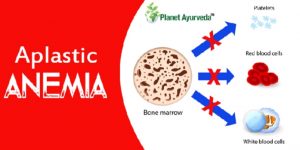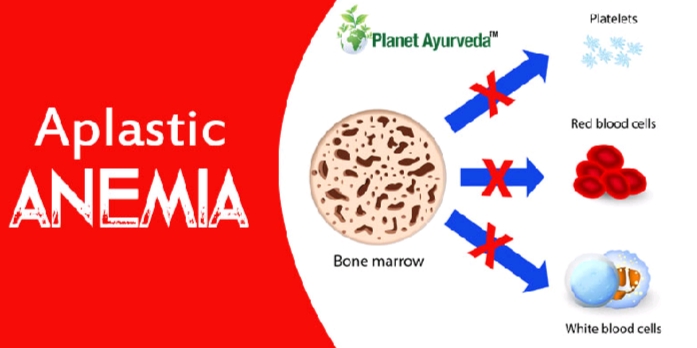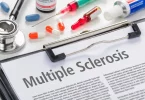What is Aplastic Anemia?
This is the name given to an autoimmune disease whereby the human body is unable to produce sufficient blood cells. Stem cells in the bone marrow become incapable of producing mature and healthy blood cells. Homeopathy is said to be the best treatment option for this autoimmune disease.
Aplastic anemia is a rare condition which can appear at any age. It can either appear all of a sudden or grow slowly, becoming severe or remaining mild over time. This disease will make you highly prone to uncontrolled bleeding and infections, and will also leave you fatigued.

Who can be affected by it?
Individuals in their early 20’s or in their late teens are more likely to be affected by this disorder, although anyone can get it. Both females and males have equal chances of being diagnosed with Aplastic Anemia. This disorder is commonly seen in several developing countries of the world.
Types
Aplastic Anemia is of the following two types:
- Inherited– This is normally caused by gene defects, and is mostly seen in young adults and children. There is a high chance of it developing into leukemia, and so you must keep visiting your doctor regularly.
- Acquired- This has been observed in adults, and something normally triggers the immune system of an affected individual.
Causes
Stem cells in the bone marrow produce 3 kinds of blood cells- white blood cells, red blood cells and platelets. In the case of aplastic anemia, stem cells are damaged, due to which the bone marrow has either too few blood cells or is empty. Its causes are:
- Stem cells being attacked by one’s own immune system, which may happen during pregnancy
- Toxic chemicals like benzene, insecticides and pesticides could cause this disorder upon repeated exposure
- Chemotherapy and radiotherapy treatments normally destroy only cancerous cells, but they may even kill healthy stem cells in the body. These treatments contribute towards Acquired Aplastic Anemia.
- Drugs for rheumatoid arthritis, along with certain types of antibiotics could result in this disorder
- Viral infections have also been linked to Aplastic Anemia
Symptoms
In several cases, doctors have found Aplastic Anemia patients to not exhibit any symptoms at all. If present, the symptoms could include:
- Pale skin
- Shortness of breath
- Skin rashes
- Headaches
- Unexplained ways of getting bruised
- Bleeding gums
- Prolonged infections
- Fever
- Rapid heart rate
Treatment of Aplastic Anemia
The treatment for this disorder is based upon your current condition and age. It is likely to include medications, blood transfusions, bone marrow transplant, and observation. If it is severe Aplastic Anemia, one of your known persons would need to immediately find a doctor to contact for aplastic anemia treatment, as you would require hospitalization.
Various ways of treating this disorder include:
- Stem cell transplants- Gathering stem cells from the bone marrow of a suitable donor and using it to build one’s own bone marrow is a suitable mode of treatment for a young patient. Once a donor has been found, the affected bone marrow is first emptied with chemotherapy or radiation. Healthy stem cells from the donor are sent intravenously to your blood, where they go to the bone marrow cavities and start producing new blood cells. This process is accompanied by a long hospital stay.
- Bone marrow stimulants– Drugs such as Filgrastim (Neupogen), Eltrombopag (Promacta), Sargramostim (Leukine) and other colony-stimulating factors stimulate bone marrow for the production of new blood cells
- Use of immunosuppressants– People who are unable to undergo bone marrow transplants due to unavailability of a suitable donor or any other reasons may be treated with drugs that suppress the immune system. When immunosuppressant drugs such as Anti-thymocyte globulin and Cyclosporine work on the body, they are able to suppress the fighting tendencies of the immune system. This way, the bone marrow is able to recover and produce new stem cells. Corticosteroids like Methylprednisolone are sometimes used with these drugs.
- Antibiotics– Aplastic Anemia weakens your body’s immune system, which could lead to fever. This may even be a precursor to a greater infection, and you must see a doctor at this stage. If the anemia is severe, you may be given antibiotics.
If treatment of this disorder is to be done in a natural way, one should try out homeopathy, after talks with your doctor. Homeopathic medicines look to stimulate healthy areas of bone marrow to produce blood cells, which will bring down the number of blood transfusions. This is helpful since a blood transfusion can always be risky, no matter how healthy the donor appears.
A patient’s general health and well being can be improved with the administration of homeopathic medicines. If it suits a patient, he/she can get several long term benefits.
How long can you survive with aplastic anemia?








